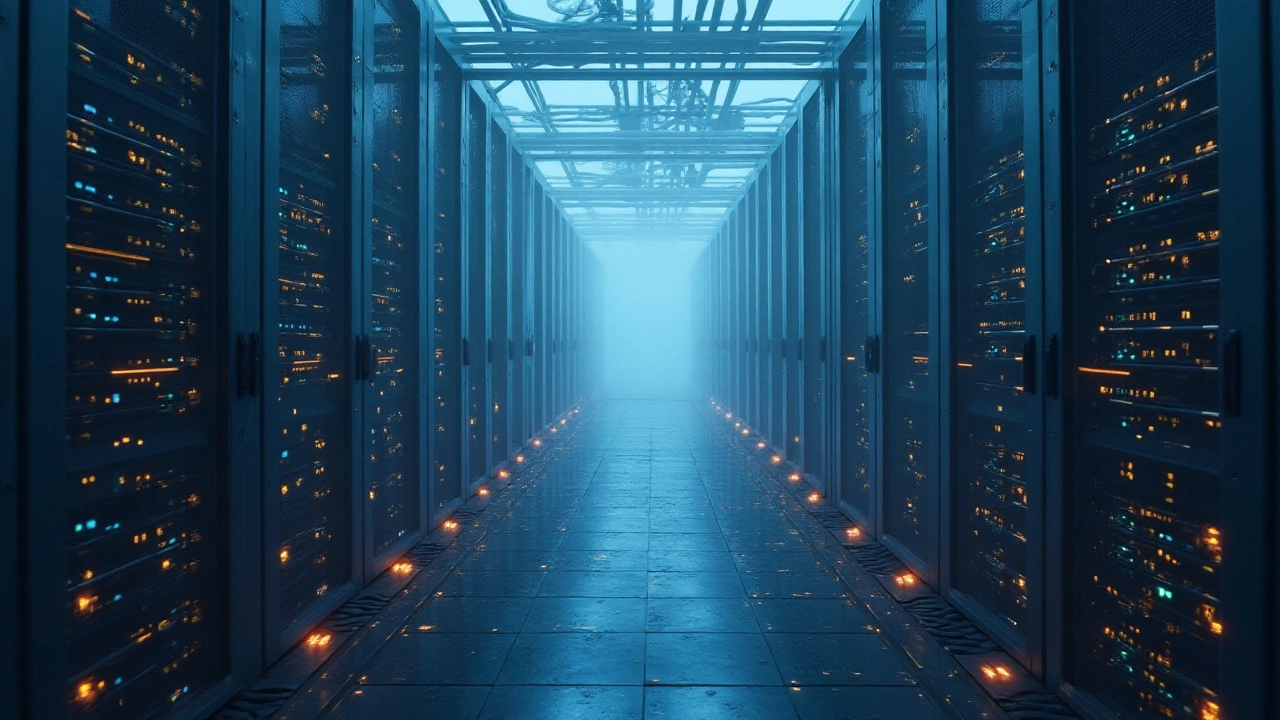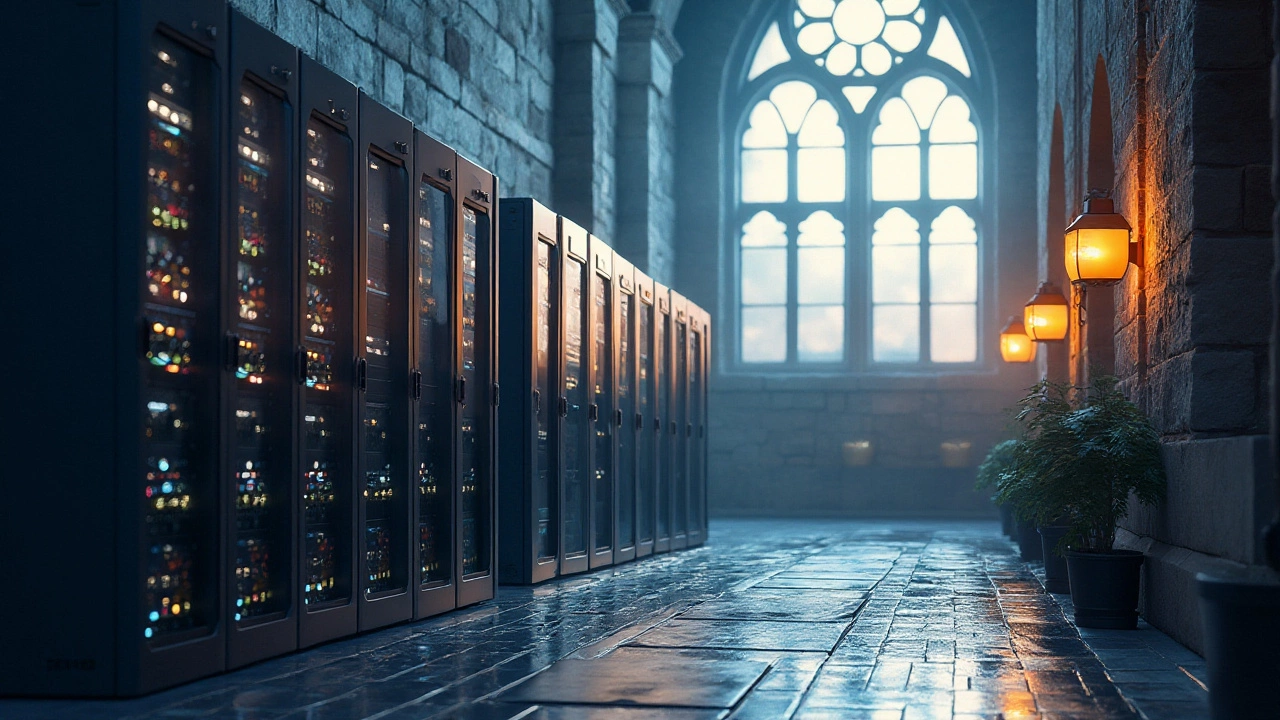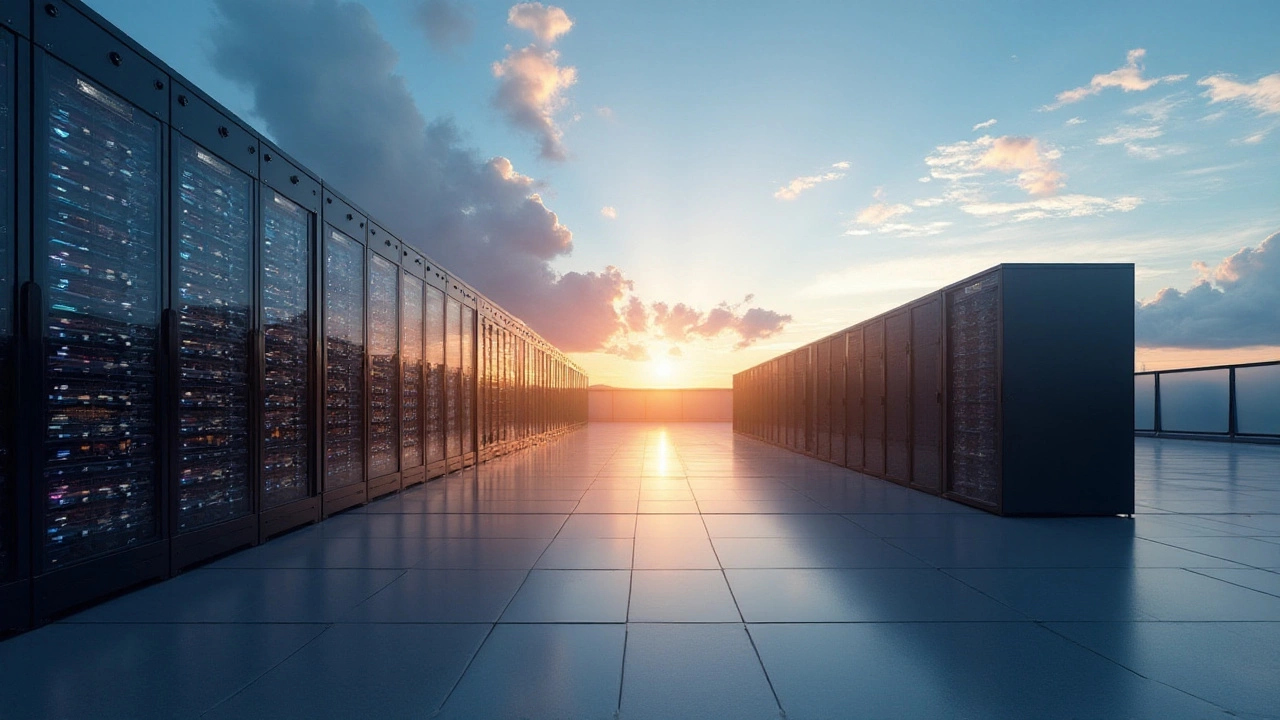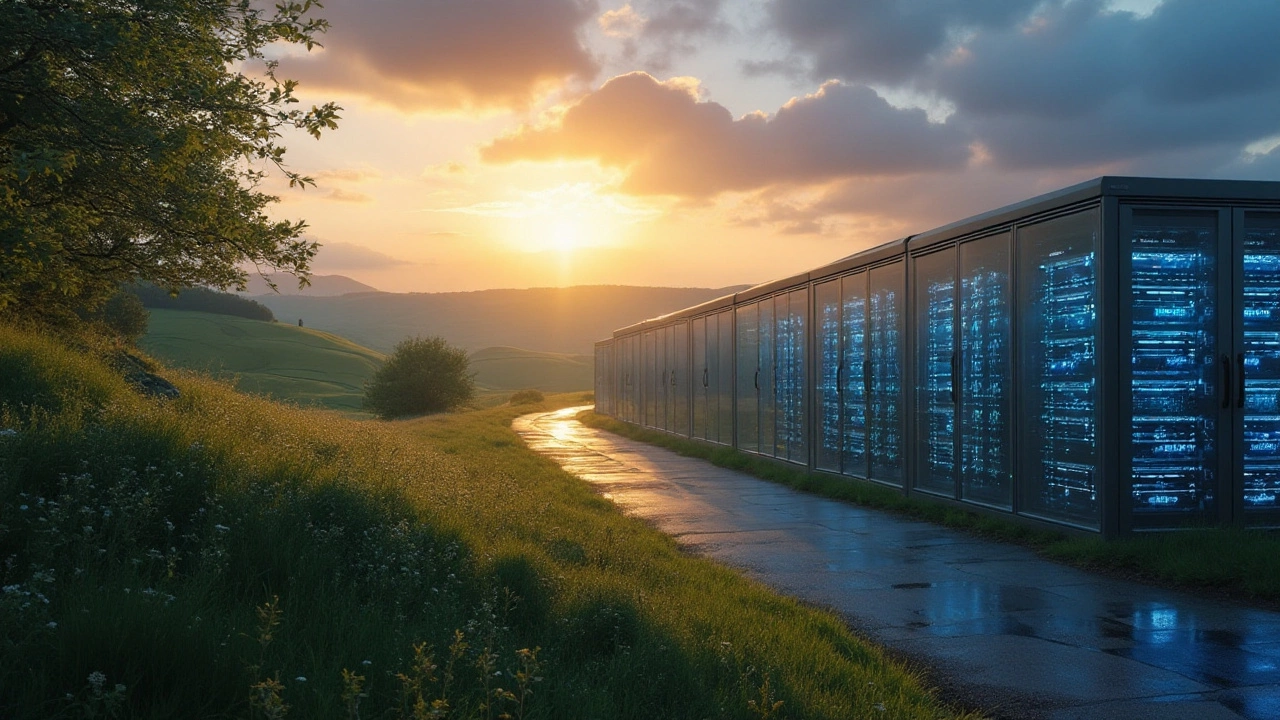Understanding the Different Tiers of Data Centers: From Tier 1 to Tier 4

In today's digital age, data centers play a crucial role in supporting business operations by providing reliable and secure storage and processing solutions. Yet, not all data centers are created equal. They are categorized into tiers, ranging from Tier 1 to Tier 4, each offering varying degrees of performance and reliability to cater to different needs.
From basic infrastructures catering to small businesses to advanced setups ensuring maximum uptime for large enterprises, knowing the distinct characteristics of each tier is essential for making informed decisions. In the following sections, we'll delve into these tiers, deciphering what makes each unique and how they serve different operational demands, ultimately helping you choose a data center solution that aligns perfectly with your business objectives.
- The Basics of Data Center Tiers
- Characteristics of Each Tier
- Choosing the Right Tier for Your Business
- Interesting Facts and Tips
The Basics of Data Center Tiers
When we talk about data centers, a key factor that comes into play is the tier classification system, which ranks these facilities based on reliability, performance, and redundancy levels. Created by The Uptime Institute, this tier system helps businesses determine which data center tiers best meet their needs. At its core, each tier represents a specific level of availability and redundancy: as you move up from Tier 1 to Tier 4, the infrastructure and the quality of service improve significantly.
A Tier 1 data center is the most basic configuration. It typically lacks redundancy and is often used by smaller businesses or operations that do not depend on continuous uptime. The infrastructure may consist of a single path for power and cooling, leaving it vulnerable to unexpected outages. In contrast, a Tier 4 data center is engineered to be fully fault-tolerant, capable of sustaining operations in the event of multiple equipment failures. This is achieved through a dual-powered configuration from top to bottom, with redundant systems in place and independent distribution paths for power and cooling.
Tier 2 data centers offer a slight improvement over Tier 1 facilities by including some redundant capacity components. This slight enhancement provides a bit more resilience against outages. However, these centers might still be susceptible to interruptions during maintenance periods or other unexpected disruptions, as they generally have a single distribution path.
As businesses evolve and data demands surge, choosing the right tier becomes crucial. The vast difference in service levels between a Tier 4 and a Tier 1 is vast, affecting everything from potential downtime to operational costs. Many larger enterprises lean towards Tier 3 and Tier 4 facilities, valuing uptime and redundancy more than the extra financial burden it may incur. According to The Uptime Institute’s 2023 report, Tier 3 and above data centers have an expected uptime of 99.982% annually, ensuring minimal disruption to operations.
If we dive deeper into the technicalities, you'll find that the tier levels not only stem from hardware differences but also from the operational measures in place. A Tier 3 center, for example, is often designed to be concurrently maintainable, allowing for any maintenance activities without disrupting the operations. This is essential for businesses that must function 24/7 without compromise. Tier 3 data centers offer a sweet spot for many businesses, providing substantial resilience without the added costs of a Tier 4 facility.
An interesting point to note is the speed of evolution in the data storage realm. Despite the structured tier system, technological innovations continue to redefine how we view data centers. As an expert from Gartner once said,
"The only constant in the digital landscape is change, and data centers must evolve to cater to new demands faster than ever."Consequently, understanding these tiers offers more than just a choice; it’s about aligning digital infrastructure with futuristic business aspirations, ensuring continuity amid growing digital reliance.

Characteristics of Each Tier
Data centers are vital hubs of IT infrastructure, and their tier classification helps identify their capabilities and reliability. The data center tiers range from Tier 1 to Tier 4, with each tier representing a different level of service delivery and uptime assurance. Let’s start with Tier 1, which is essentially the foundation. These data centers offer the most basic facilities, supporting power and cooling, but without any backup or redundancy. This means that in the event of a power outage or system failure, Tier 1 data centers might experience significant downtime. Tier 1 facilities are suitable for small businesses where cost-saving is paramount, and risk tolerance is relatively high.
Moving on to Tier 2, these data centers provide a step up in terms of redundancy and reliability. They include various redundant capacity components such as generators and UPS systems. This tier is designed to handle more substantial operations and can support longer uptime compared to Tier 1. Businesses that require a little more assurance regarding service continuity, but do not need the advanced capabilities of higher tiers, often choose Tier 2 facilities. They represent a balance between cost and reliability, ensuring that unexpected downtimes are minimized to some extent.
Tier 3 Data Center: The Robust Middle Ground
Tier 3 data centers introduce N+1 redundancy, which significantly enhances the facility's reliability. These centers are often referred to as concurrently maintainable, as they ensure that any component can be removed for maintenance or repair without affecting the data center's overall operations. As a result, their operational uptime is vastly improved compared to the lower tiers. Tier 3 data centers are ideal for enterprises that prioritize both cost efficiency and operational reliability. A notable aspect is their ability to handle scheduled maintenance without disrupting services. As CNN reported, 'Data centers of Tier 3 classification maintain an impressive uptime of around 99.982 percent annually.'Finally, Tier 4 data centers stand at the top in terms of warehouse solutions and service reliability. These facilities offer 2N+1 redundancy, implying that they have two independent power and cooling components, plus an additional backup. This ensures that operations at Tier 4 centers are uninterrupted, even during significant disruptions. With an annual uptime of 99.995 percent, they support critical applications and services that cannot afford downtime. Often, industries like banking, healthcare, and government sectors rely on Tier 4 data centers due to their rigorous redundancy and fault-tolerance capabilities. Though more expensive, their priceless reliability justifies the investment for businesses that demand round-the-clock functionality.
‘In the technology-driven world, choosing the right tier of data center is a strategic decision echoing through every line of business,’ opined an expert from Gartner.
The choice of the appropriate tier should align with the operational needs, budget constraints, and risk tolerance of your business. By understanding these characteristics, businesses can better navigate the complexities of data center selection and ensure that their operations run smoothly and efficiently.

Choosing the Right Tier for Your Business
Deciding which tier of data center to choose is a critical decision for every business, influenced by factors like budget, operational needs, and the level of reliability desired. For instance, a Tier 1 data center might be quite appealing to smaller businesses with modest needs. These data centers provide a basic level of redundancy, which might suffice if occasional outages are acceptable. They are cost-effective but can pose risks for businesses that can't afford downtime. On the other hand, companies that require much more reliable solutions might lean towards a higher-tier data center to ensure their operations remain uninterrupted.
When considering a Tier 2 data center, businesses get a little more redundancy compared to Tier 1 but still not as much as the higher tiers. These centers generally suit midsize businesses fairly well. They offer some measure of additional fault tolerance over Tier 1, such as redundant power and cooling paths. However, like Tier 1, they still do not provide complete fault tolerance, which may mean more risk during maintenance. Using Tier 2 can be a balanced approach for organizations seeking better uptime without breaking the bank.
For businesses operating in industries that demand near-total reliability, like financial services or healthcare, a Tier 3 data center often strikes the right balance. These centers offer significant redundancy, ensuring that planned maintenance doesn't disrupt services thanks to their use of redundant distribution paths. They're designed to allow for concurrent maintenance, making them a suitable choice for demanding environments where uptimes greater than 99.98% are critical. Firms requiring high reliability without the extreme costs of Tier 4 often find Tier 3 solutions an optimal compromise.
Finally, when zero downtime is a mission-critical requirement, Tier 4 data centers stand out as the superior choice. They provide the highest redundancy level with fully fault-tolerant components, ensuring continuous operation even in extreme circumstances. These data centers are designed to withstand any unplanned event, making them ideal for industries where failure isn't an option.
According to the Uptime Institute, Tier 4 facilities are designed to provide an uptime of 99.995%, which is just about as close to perfect as one can get in this field. "Organizations that choose Tier 4 are those that understand the cost of downtime and are willing to invest accordingly," states Peter Judge, data center industry analyst.
In summation, when choosing the right tier, businesses must weigh their needs against their resources. A practical approach involves assessing downtime costs, growth projections, and understanding future IT strategies. Investing in the appropriate tier can ensure a business not only avoids potential losses but also supports its growth efficiently. Therefore, understanding these tiers deeply and aligning them with corporate goals is crucial for making the most informed data center investments.

Interesting Facts and Tips
When diving into the intricacies of data center tiers, one unearths fascinating insights that go beyond the technicalities. Did you know that Tier 1 data center and Tier 4 data center represent the two ends of a spectrum in terms of availability and redundancy? Tier 1 facilities provide basic infrastructure with no redundancy, meaning if there’s an outage, systems can go down. On the flip side, Tier 4 data centers are equipped to handle disruptions without affecting operations, guaranteeing 99.995% availability. This means in a year, the maximum downtime would be approximately 26.3 minutes, as opposed to Tier 1, where downtime can reach up to 28.8 hours annually.
As businesses scale and the demand for data-centric operations rise, choosing the right tier becomes crucial. Companies like Google and Amazon often deploy Tier 3 and Tier 4 facilities to meet their high standards of reliability and performance. An interesting tidbit is that the cost of building and maintaining a Tier 4 data center is significantly higher, but the investment pays off in maximum uptime and operational resilience. According to a study done by the Uptime Institute, even a minute of unplanned downtime can cost companies thousands in lost revenue and productivity. Hence, the selection of the right tier can have profound financial implications.
"An ounce of prevention is worth a pound of cure," famously quoted by Benjamin Franklin, applies aptly when considering the tier structure and its long-term benefits.
For enterprises embarking on their data center journey, understanding the nuanced differences can ensure a strategic advantage. It is recommended to conduct a risk analysis to evaluate business needs against potential disruptions. This analysis should consider the cost of downtime, budget constraints, and future growth plans. Organizations should also contemplate climate considerations, like how extreme weather might affect data center locations, especially for Tier 1 data center setups, which lack redundant infrastructure.
A tip often overlooked is the environmental impact of data centers. Higher-tiered facilities, while more energy-intensive, are increasingly adopting greener technologies to minimize their carbon footprint. Thus, when selecting your data center options, it might be beneficial to inquire about sustainability measures like efficient cooling systems and renewable energy usage. This not only aligns with corporate social responsibility goals but might also contribute to operational savings in energy costs over time.
Final Thoughts
While technical specifications and cost considerations often dominate discussions of data center tiers, it is crucial to also evaluate the strategic and cultural fit of data center partnerships. Selecting the right tier not only ensures your digital ecosystem thrives without disruption but also aligns with your strategic vision and operational priorities. Thus, whether you’re considering a humble Tier 1 data center for its cost-effectiveness or a robust Tier 4 data center for its premium reliability, informed decision-making is vital in crafting a future-proof data infrastructure.